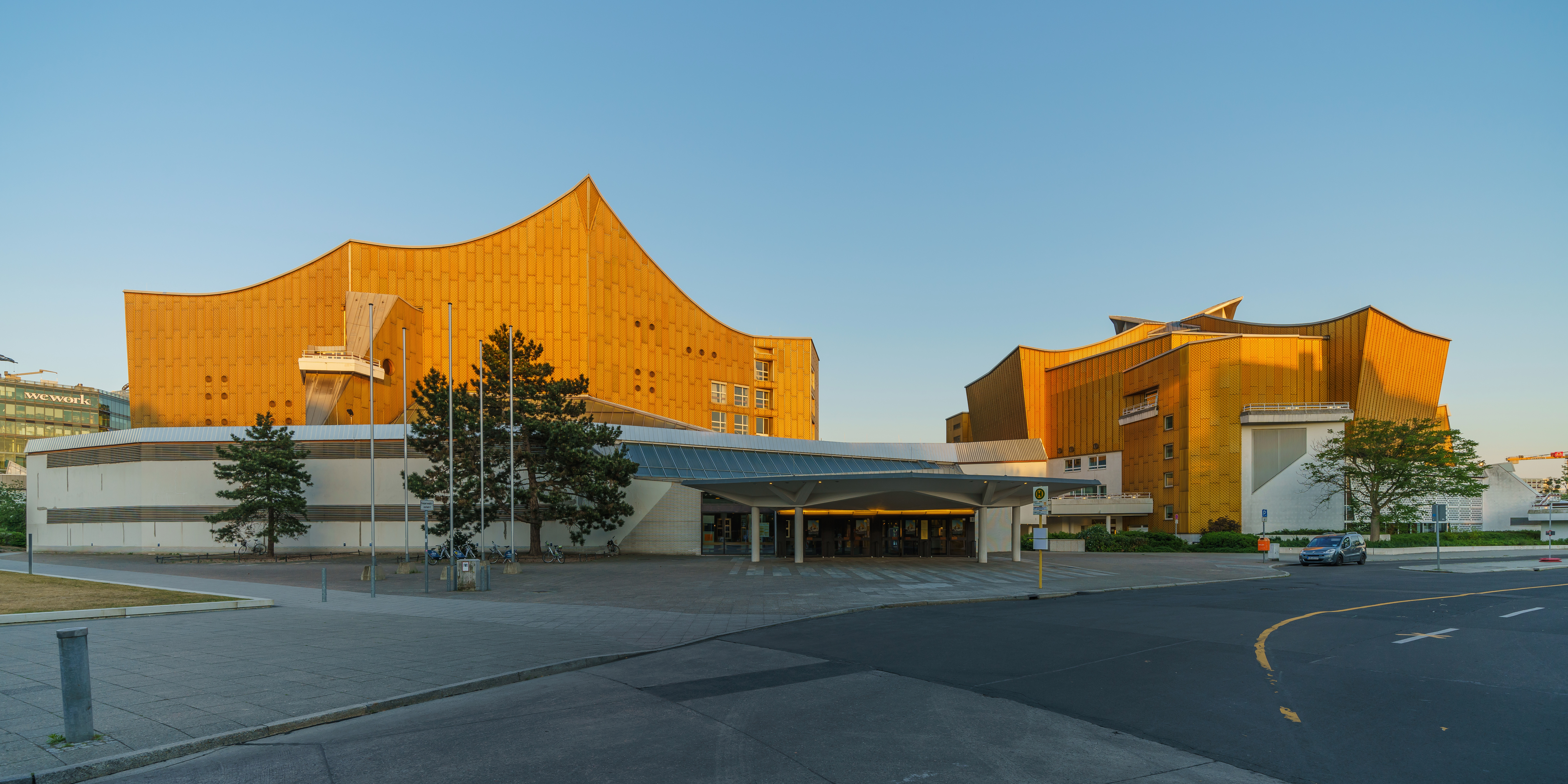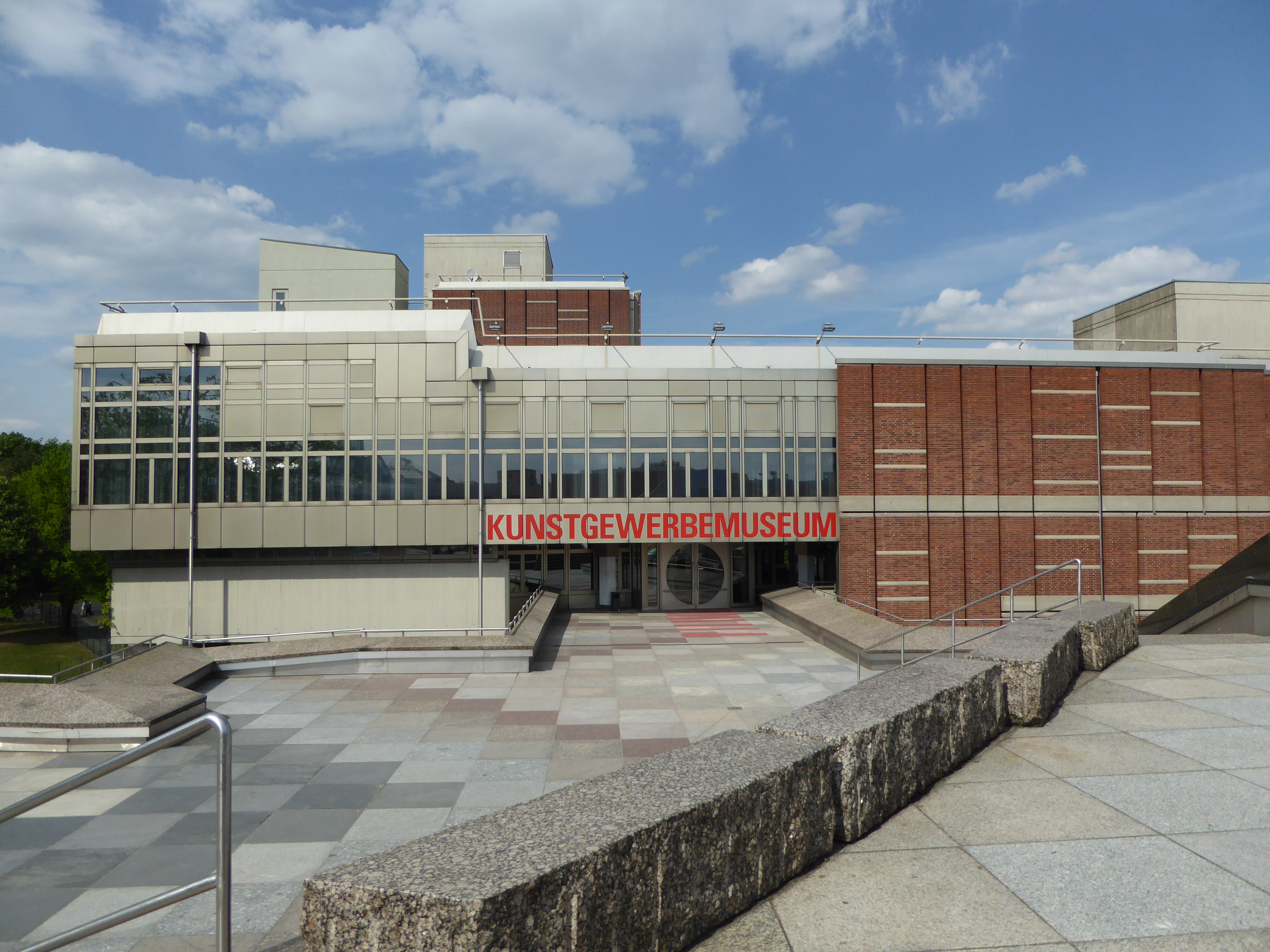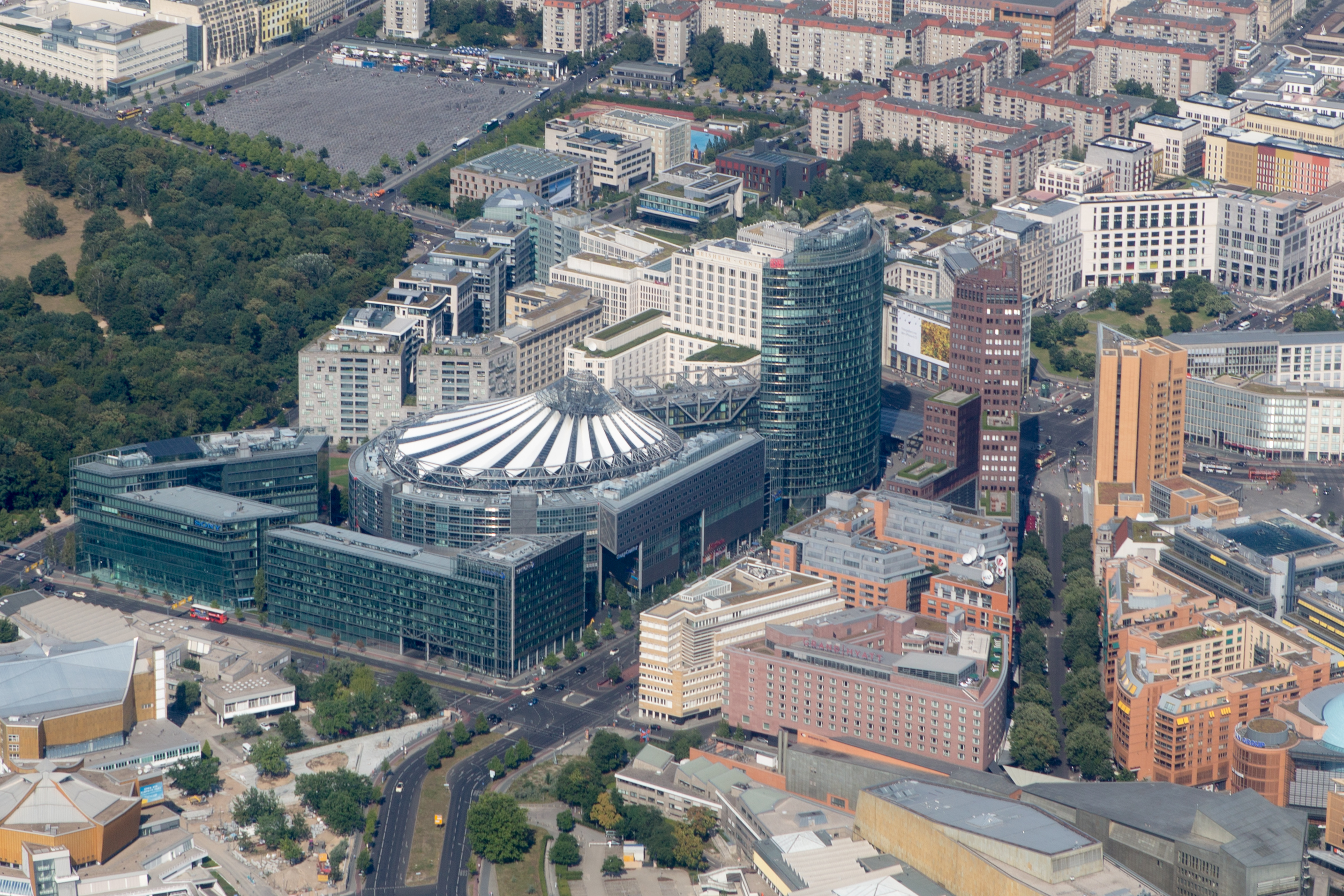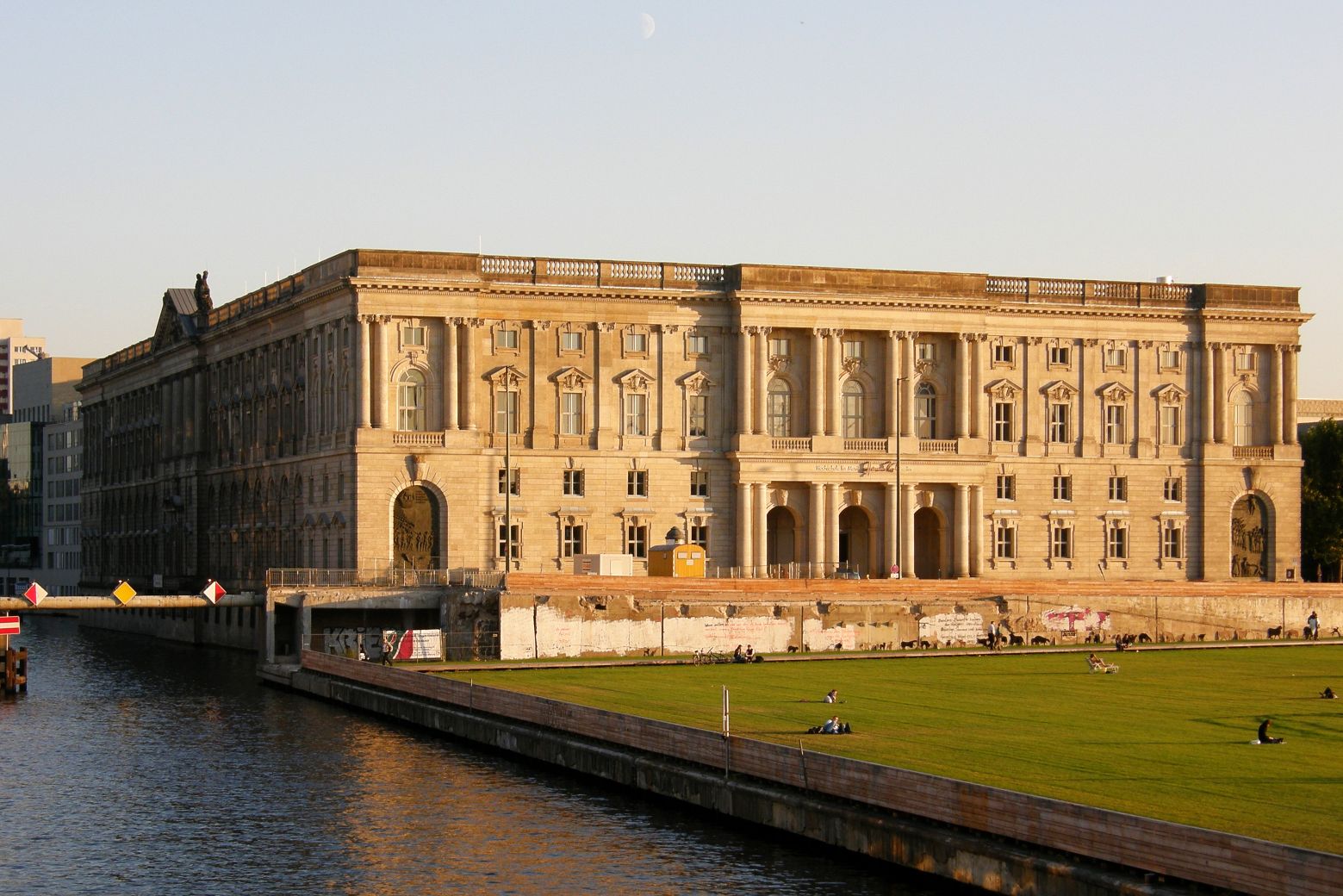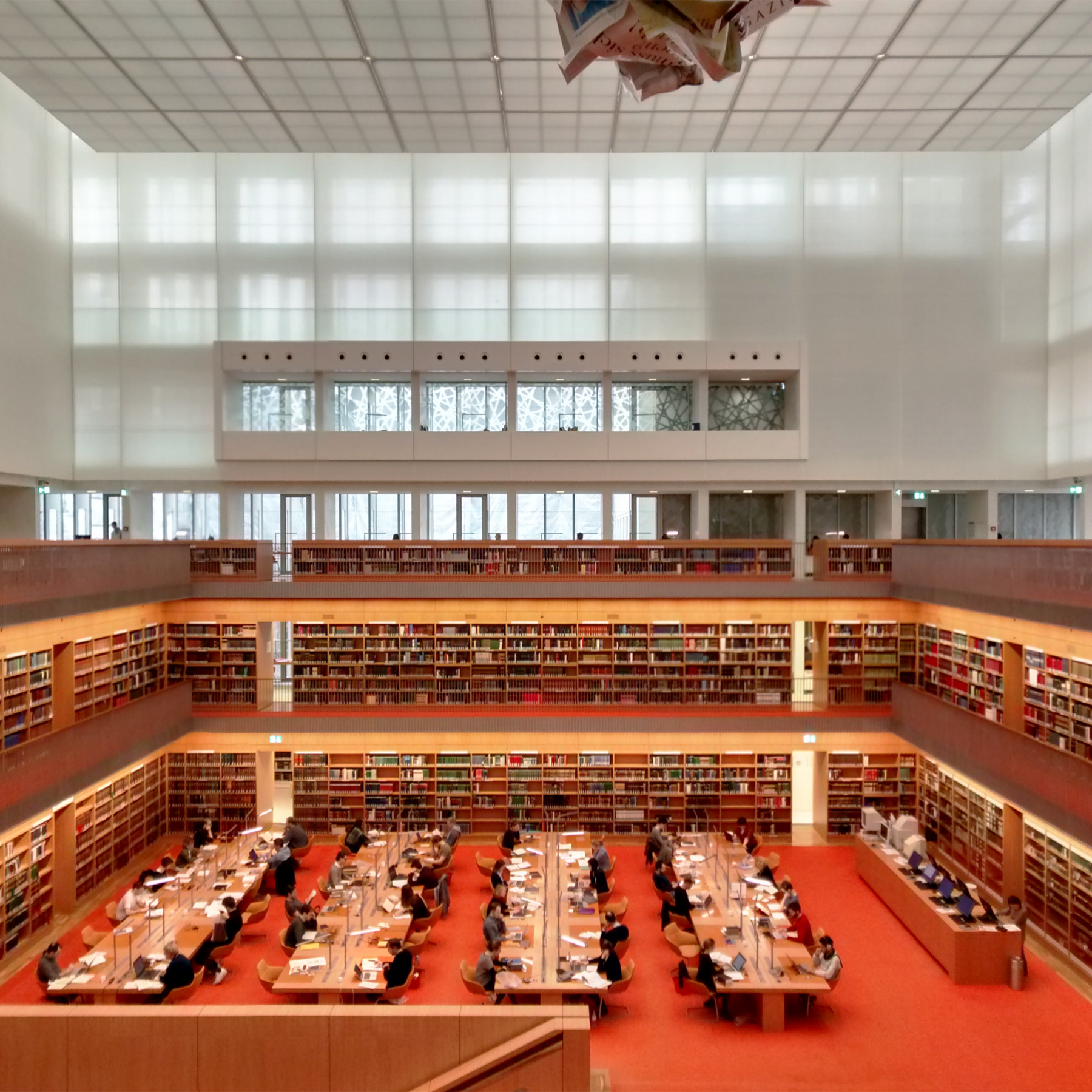|
Kulturforum
The Kulturforum ( en, Cultural Forum) is a collection of cultural buildings in Berlin. It was built up in the 1950s and 1960s at the edge of West Berlin, after most of the once unified city's cultural assets had been lost behind the Berlin Wall. The Kulturforum is characterized by its innovative modernist architecture; several buildings are distinguished by the organic designs of Hans Scharoun, and the Neue Nationalgalerie was designed by Mies van der Rohe. Today, the Kulturforum lies immediately to the west of the redeveloped commercial node of Potsdamer Platz. Cultural institutions Among the cultural institutions housed in and around the Kulturforum are: *Neue Nationalgalerie * Gemäldegalerie *Kunstgewerbemuseum Berlin (Museum of Decorative Arts) * Musical Instrument Museum * Kupferstichkabinett (Print room) *Kunstbibliothek Berlin (Berlin Art Library) *Berliner Philharmonie * Chamber Music Hall *Berlin State Library ''Haus Potsdamer Straße'' *Ibero-American Institute * Wis ... [...More Info...] [...Related Items...] OR: [Wikipedia] [Google] [Baidu] |
Kunstgewerbemuseum Berlin
__NOTOC__ The Kunstgewerbemuseum, or Museum of Decorative Arts, is an internationally important museum of the decorative arts in Berlin, Germany, part of the Staatliche Museen zu Berlin (Berlin State Museums). The collection is split between the Kunstgewerbemuseum building at the Kulturforum and Köpenick Palace History It was founded in 1868 as the ''Deutsches Gewerbe-Museum zu Berlin'', and originally had a teaching institute as well as a public museum. The collection grew significantly in the 1870s, and it was renamed ''Kunstgewerbemuseum'' in 1879. In 1881 it relocated into the Martin-Gropius-Bau – where Priam's Treasure was also on display for a time – and in 1921 it moved into the Stadtschloss.Heute mal Extremitäten Tobias Timm, '' |
Potsdamer Platz
Potsdamer Platz (, ''Potsdam Square'') is a public square and traffic intersection in the center of Berlin, Germany, lying about south of the Brandenburg Gate and the Reichstag (German Parliament Building), and close to the southeast corner of the Tiergarten park. It is named after the city of Potsdam, some to the south west, and marks the point where the old road from Potsdam passed through the city wall of Berlin at the Potsdam Gate. After developing within the space of little over a century from an intersection of rural thoroughfares into the most bustling traffic intersection in Europe,Weitz, Eric D. ''Weimar Germany'', 2007, Princeton University Press, , page 43 it was totally destroyed during World War II and then left desolate during the Cold War era when the Berlin Wall bisected its former location. Since German reunification, Potsdamer Platz has been the site of major redevelopment projects. Historical background The history of Potsdamer Platz can be traced to ... [...More Info...] [...Related Items...] OR: [Wikipedia] [Google] [Baidu] |
Gemäldegalerie, Berlin
The Gemäldegalerie (, ''Painting Gallery'') is an art museum in Berlin, Germany, and the museum where the main selection of paintings belonging to the Berlin State Museums (''Staatliche Museen zu Berlin'') is displayed. It was first opened in 1830, and the current building was completed in 1998. It is located in the Kulturforum museum district west of Potsdamer Platz. It holds one of the world's leading collections of European paintings from the 13th to the 18th centuries. Its collection includes masterpieces from such artists as Albrecht Dürer, Lucas Cranach, Hans Holbein, Rogier van der Weyden, Jan van Eyck, Raphael, Botticelli, Titian, Caravaggio, Peter Paul Rubens, David Teniers the Younger, Rembrandt, Johannes Vermeer, Thomas Gainsborough, Joshua Reynolds and Antonio Viviani. Collection The Gemäldegalerie prides itself on its scientific methodology in collecting and displaying art. Each room can be taken in as a single statement about one to five artists ... [...More Info...] [...Related Items...] OR: [Wikipedia] [Google] [Baidu] |
Kupferstichkabinett Berlin
The Kupferstichkabinett, or Museum of Prints and Drawings, is a prints museum in Berlin, Germany. It is part of the Berlin State Museums, and is located in the Kulturforum on Potsdamer Platz. It is the largest museum of graphic art in Germany,Museum of Prints and Drawings with more than 500,000 prints and around 110,000 individual works on paper (drawings, s, s, [...More Info...] [...Related Items...] OR: [Wikipedia] [Google] [Baidu] |
Berlin Philharmonie Asv2018-05 Img2
Berlin ( , ) is the capital and largest city of Germany by both area and population. Its 3.7 million inhabitants make it the European Union's most populous city, according to population within city limits. One of Germany's sixteen constituent states, Berlin is surrounded by the State of Brandenburg and contiguous with Potsdam, Brandenburg's capital. Berlin's urban area, which has a population of around 4.5 million, is the second most populous urban area in Germany after the Ruhr. The Berlin-Brandenburg capital region has around 6.2 million inhabitants and is Germany's third-largest metropolitan region after the Rhine-Ruhr and Rhine-Main regions. Berlin straddles the banks of the Spree, which flows into the Havel (a tributary of the Elbe) in the western borough of Spandau. Among the city's main topographical features are the many lakes in the western and southeastern boroughs formed by the Spree, Havel and Dahme, the largest of which is Lake Müggelsee. Due to its location ... [...More Info...] [...Related Items...] OR: [Wikipedia] [Google] [Baidu] |
Berlin Neue Nationalgalerie Asv2021-11 Img1
Berlin is the capital and largest city of Germany, both by area and by population. Its more than 3.85 million inhabitants make it the European Union's most populous city, as measured by population within city limits having gained this status after the United Kingdom's, and thus London's, departure from the European Union. Simultaneously, the city is one of the states of Germany, and is the third smallest state in the country in terms of area. Berlin is surrounded by the state of Brandenburg, and Brandenburg's capital Potsdam is nearby. The urban area of Berlin has a population of over 4.5 million and is therefore the most populous urban area in Germany. The Berlin-Brandenburg capital region has around 6.2 million inhabitants and is Germany's second-largest metropolitan region after the Rhine-Ruhr region, and the fifth-biggest metropolitan region by GDP in the European Union. Berlin was built along the banks of the Spree river, which flows into the Havel in the western bor ... [...More Info...] [...Related Items...] OR: [Wikipedia] [Google] [Baidu] |
Berlin State Museums
The Berlin State Museums (german: Staatliche Museen zu Berlin) are a group of institutions in Berlin, Germany, comprising seventeen museums in five clusters, several research institutes, libraries, and supporting facilities. They are overseen by the Prussian Cultural Heritage Foundation and funded by the German federal government in collaboration with Germany's federal states. The central complex on Museum Island was added to the UNESCO list of World Heritage Sites in 1999. By 2007, the Berlin State Museums had grown into the largest complex of museums in Europe. The museum was originally founded by King Friedrich Wilhelm III of Prussia in 1823 as the Königliche Museen (in English, Royal Museums). The director-general of the Berlin State Museums is Michael Eissenhauer. Museum locations Berlin-Mitte * Museum Island ** Altes Museum: Roman and Greek Classical Antiquities ** Alte Nationalgalerie: 19th century sculptures and paintings. ** Bode-Museum: the Numismatic C ... [...More Info...] [...Related Items...] OR: [Wikipedia] [Google] [Baidu] |
Neue Nationalgalerie
The Neue Nationalgalerie (New National Gallery) at the Kulturforum is a museum for modern art in Berlin, with its main focus on the early 20th century. It is part of the National Gallery of the Berlin State Museums. The museum building and its sculpture gardens were designed by Ludwig Mies van der Rohe and opened in 1968. The gallery closed in 2015 for renovation. The work, by David Chipperfield Architects, was completed in 2021, and the museum reopened in August 2021 with an exhibition of works by American sculptor Alexander Calder. Collection The collection features a number of unique highlights of modern 20th-century art. Particularly well represented are Cubism, Expressionism, the Bauhaus and Surrealism. The collection owns masterpieces of artists like Pablo Picasso, Ernst Ludwig Kirchner, Joan Miró, Wassily Kandinsky and Barnett Newman. The design of the building, despite its large size, allows for the display of only a small part of the collection, and the displays are ... [...More Info...] [...Related Items...] OR: [Wikipedia] [Google] [Baidu] |
Ibero-American Institute
The Ibero-American Institute or IAI (german: Ibero-Amerikanisches Institut, es, Instituto Ibero-Americano Patrimonio Cultural Prusiano) is an interdisciplinary institution located in Berlin, Germany, for academic and cultural exchange between Germany and Latin America, Spain, Portugal and the Caribbean. It is the largest non-university research center for Latin American Studies outside of Latin America. It also features the largest specialized library in Europe on Latin America, Spain, Portugal and the Caribbean. In addition to a large rare book collection, the IAI collects and preserves magazines, electronic documents, maps, audio media, photographs, videos, DVDs, papers and diverse additional materials. The IAI is a member of the research association CEISAL ( es, Consejo Europeo de Investigaciones Sociales de América Latina) and the documentation network association REDIAL. Founded in 1930, since 1962 the IAI has been an agency of the Prussian Cultural Heritage Foundation. It is ... [...More Info...] [...Related Items...] OR: [Wikipedia] [Google] [Baidu] |
Berlin State Library
The Berlin State Library (german: Staatsbibliothek zu Berlin; officially abbreviated as ''SBB'', colloquially ''Stabi'') is a universal library in Berlin, Germany and a property of the Prussian Cultural Heritage Foundation. It is one of the largest libraries in Europe, and one of the most important academic research libraries in the German-speaking world. It collects texts, media and cultural works from all fields in all languages, from all time periods and all countries of the world, which are of interest for academic and research purposes. Some famous items in its collection include the oldest biblical illustrations in the fifth-century Quedlinburg Itala fragment, a Gutenberg Bible, the main autograph collection of Goethe, the world's largest collection of Johann Sebastian Bach's and Wolfgang Amadeus Mozart's manuscripts, and the original score of Ludwig van Beethoven's Symphony No. 9. Central functions and cooperation with other libraries The SBB is one of six libraries for ... [...More Info...] [...Related Items...] OR: [Wikipedia] [Google] [Baidu] |
Kunstbibliothek Berlin
The Berlin Art Library (german: Kunstbibliothek Berlin) is an agency of the Berlin State Museums under the auspices of the Prussian Cultural Heritage Foundation. It has approximately 400,000 volumes and ranks among Germany's leading institutions specializing in the literature of Art History. The library is located on the Kulturforum in Berlin-Tiergarten, Germany and attracts 35,000 visitors annually. The Library also has a comprehensive photographic collection. Its holdings date back to the very early days of photography, through Pictorialism around the late 19th and early 20th centuries, through the Neues Sehen or ''New Vision'' of the 1920s, to the new artistic styles of the present day. Since June 2004, the collection has held exhibitions under the same roof as the Helmut Newton Foundation at the Museum of Photography opposite the Zoologischer Garten station. After a complete restoration of the Kaisersaal, the Art Library Photographic Collection now has its own exhibition spa ... [...More Info...] [...Related Items...] OR: [Wikipedia] [Google] [Baidu] |
Berliner Philharmonie
The Berliner Philharmonie () is a concert hall in Berlin, Germany, and home to the Berlin Philharmonic Orchestra. The Philharmonie lies on the south edge of the city's Tiergarten and just west of the former Berlin Wall. The Philharmonie is on Herbert-von-Karajan-Straße, named for the orchestra's longest-serving principal conductor. The building forms part of the Kulturforum complex of cultural institutions close to Potsdamer Platz. The Philharmonie consists of two venues, the Grand Hall (''Großer Saal'') with 2,440 seats and the Chamber Music Hall (''Kammermusiksaal'') with 1,180 seats. Though conceived together, the smaller hall was opened in the 1980s, some twenty years after the main building. History Hans Scharoun designed the building, which was constructed over the years 1960–1963. It opened on 15 October 1963 with Herbert von Karajan conducting Beethoven's 9th Symphony. It was built to replace the old Philharmonie, destroyed by British bombers on 30 January 19 ... [...More Info...] [...Related Items...] OR: [Wikipedia] [Google] [Baidu] |
